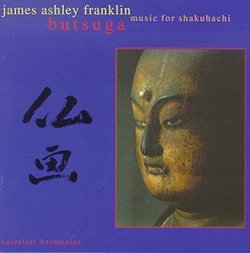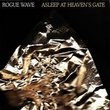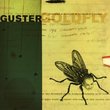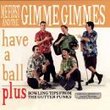| All Artists: James Ashley Franklin Title: Butsuga Members Wishing: 0 Total Copies: 0 Label: Celestial Harmonies Original Release Date: 6/11/1999 Re-Release Date: 6/29/1999 Genres: Dance & Electronic, New Age, Pop, Rock Styles: Ambient, Meditation, Progressive, Electronic Number of Discs: 1 SwapaCD Credits: 1 UPC: 013711317725 |
Search - James Ashley Franklin :: Butsuga
 | James Ashley Franklin Butsuga Genres: Dance & Electronic, New Age, Pop, Rock
Butsuga is the combination of two symbols: those for Buddha and image. The notion that this implies, of an image of Buddha or a Buddhist image, can be understood in various ways. This recording, Butsuga, combines these ... more » |
Larger Image |
CD Details
Synopsis
Album Description
Butsuga is the combination of two symbols: those for Buddha and image. The notion that this implies, of an image of Buddha or a Buddhist image, can be understood in various ways. This recording, Butsuga, combines these two images through the way it was created. Recorded on location in a Japanese garden, a place where the harmony of the natural world becomes self-evident, the music was conceived and presented as a journey through the garden both in space and time: recordings made at the significant geographical and symbolic features of the garden, within the changing moods of one day (from dawn to dusk, literally). The style of Japanese garden used for this recording is kaiyushiki, a large area in which one may stroll around, visiting various landscapes and edifices, rich in Japanese landscapes and natural sounds.Beginning and ending with tranquility, the natural sounds of the garden are present throughout. Some pieces were actually conceived in such a way as to deliberately integrate these sounds. Looking for Deer bases its phrase lengths around the ebb and flow of the deer-startler, and Peace Bell revolves around a collage of bell and chime sounds recorded near the Bell House, an edifice near the entry to the Garden. Some pieces, including the shakuhachi parts for Peace Bell, were recorded in a large, resonant pavilion, one of a cluster of buildings representing a city on the shores of the ocean. The journey climaxes with the attainment in the mid-afternoon of the peak of the symbolic mountain, represented by traditional honkyoku, Yamagoe (Mountain Crossing). The honkyoku represent the original repertoire for shakuhachi, performed by itinerant Zen monks as a form of meditation, themselves on a journey, seeking realization as the image of Buddha. A virtual walk through a Japanese garden, blending human and natural landscapes, and instrumental and natural sound worlds.
Similarly Requested CDs
| Rogue Wave Asleep at Heaven's Gate Genres: Alternative Rock, Pop, Rock Label: Brushfire Records | |
| Guster Goldfly Genres: Alternative Rock, Pop, Rock Label: Reprise / Wea | |
| Ben Kweller Sha Sha Genres: Alternative Rock, Folk, Pop, Rock Label: ATO Records | |
| Joseph Arthur Redemption's Son Genres: Alternative Rock, Pop, Rock Label: Umvd Labels | |
| Jon Mclaughlin Indiana Genres: Alternative Rock, Folk, Pop, Rock Label: Island | |

 Track Listings (9) - Disc #1
Track Listings (9) - Disc #1







